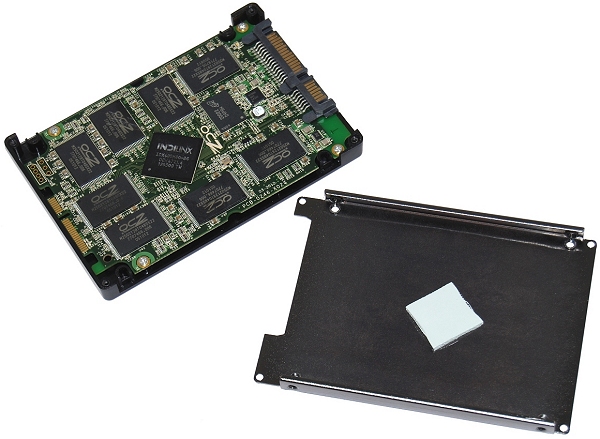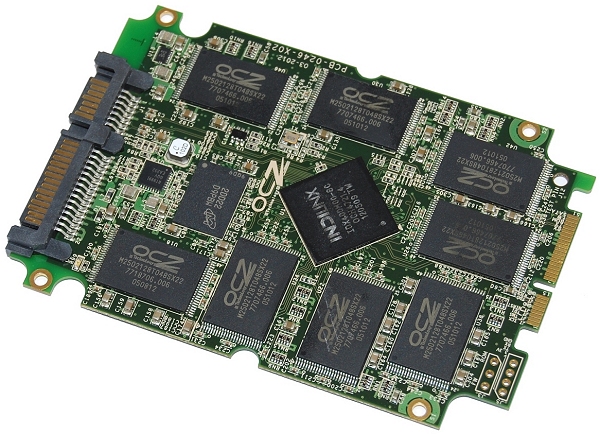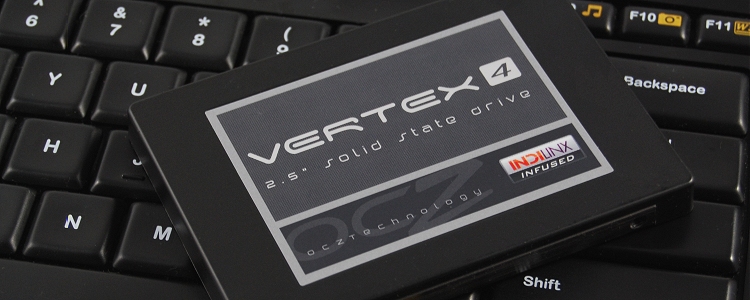Although SandForce controllers have powered much of OCZ's solid-state lineup, the company is shifting to its own solutions after purchasing Indilinx early last year. The "Octane" flash drives were the first to use the Indilinx Everest controller last holiday season and now that its SF-2281-based drives are over a year old, OCZ has begun phasing Everest into the rest of its offerings, including the Vertex series.
The Octane drives demonstrated impressive stability and speed, boasting read and write performance of 520MB/s and 410MB/s, which is competitive with today's high-end SATA 6Gb/s SSDs. Despite being a solid series, it hasn't been a particularly popular option among enthusiasts because of pricing. Even today, the 256GB model costs $300, while the 240GB Vertex 3 can be had for as little as $210.
Since the Octane's launch, OCZ has whipped up a second-gen Everest controller, the silicon behind the company's new Vertex 4. Despite touting more performance than the Octane series, the Vertex 4 appears to be competitively priced with existing SandForce, Samsung, and Marvell-based drives, which should make it a more viable option – if not the de facto choice – among high-end system builders...

The Vertex 4 series is aimed at performance buffs, with initial Indilinx Everest 2 based models offering capacities of 64GB, 128GB, 256GB and 512GB. The drives have a slim 2.5" design, measuring 99.8 x 69.63 x 9.3mm and weighing up to 83 grams.
Power consumption is low compared to conventional hard drives as the Vertex 4 uses just 2.5 watts when active and 1.3 watts when in standby mode. While this is less than OCZ's claimed power rating for the Vertex 3, it's more than what Intel claims for its SSD 520 Series.
The 64GB model packs read and write speeds of 460MB/s and 220MB/s. The 128GB version is much faster with 550MB/s reads and 420MB/s writes. The 256GB and 512GB models feature the same 550MB/s reads, but writes are boosted to 465MB/s and 475MB/s, respectively.


Naturally, using the SATA 6Gb/s interface is essential to achieving these speeds. Currently Intel's Sandy Bridge platforms provide native SATA 6Gb/s support, as does the AMD AM3+ platform.
All Vertex 4 models are loaded with Intel MLC NAND (25nm) synchronous flash memory. Our review sample has sixteen 16GB Intel 29F16B08CCME3 NAND ICs for a capacity of 256GB.
Once formatted in Windows, the original 256GB is converted to 239GiB, though Windows shows this as 239GB, so it seems like 7% of the original capacity has been lost. With a current retail price of $240, the Vertex 4 256GB costs $0.93 per gigabyte, an excellent value for a high-performance SSD.

The Indilinx Everest 2 controller features a dual-core ASIC processor operating at 400MHz and is coupled with a 1GB DRAM cache. OCZ used a pair of Micron DDR3-800 512MB chips, one on either side of the PCB.
The Vertex 4 also includes features that are purportedly unique to the Indilinx controller, including latency reduction technology to enhance system responsiveness and enable instant-on boot-ups. OCZ says access times are as low as 0.02ms. A "Fast Boot' technology supposedly delivers speedier boot times compared to existing SSDs. Couple that with no data compression limitations as in SandForce-equipped models, users can expect better performance with certain operations with media files and the like.


There's also the proprietary NDurance 2.0 technology which increases the lifespan of the NAND flash memory by as much as two times, from the 3,000-5,000 PE write cycles currently seen on 20nm-class NAND drives back to the 6,000-10,000 range we saw with 30nm-class NAND.
Despite NDurance 2.0, OCZ has only given the Vertex 4 a MTBF (Mean Time Between Failure) rating of two million hours, identical to the Vertex 3.


Regardless of its MTBF, the Vertex 4 carries a respectable five-year warranty, which is also backed by toll-free tech support and 24-hour Web support on the OCZ forums.
The Vertex 4 drives support AES-256 and automatic encryption to secure critical data, bringing unique enterprise features within the reach of enthusiasts. Support for Background Garbage Collection, TRIM, SMART and NCQ are also present.
